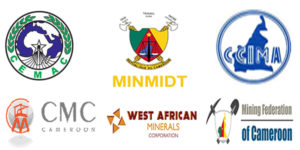Cameroon, known for its diverse natural resources, is a significant player in the diamond industry. For those looking to invest in or purchase rough diamonds, understanding where these precious stones are found and how to buy them can be crucial. This guide will help you navigate the diamond landscape in Cameroon, providing valuable insights into where diamonds are located and how to acquire them.

Rough Diamond Market Cameroon
The rough diamond market in Cameroon is influenced by several factors, including regional mining activities, government regulations, and global demand for diamonds. The country is known for its significant diamond deposits, particularly in the Adamawa, East, and South regions. These areas contribute to a vibrant market where both artisanal and industrial mining operations are active.
Key Players in the Market
- Local Miners and Artisanal Operations: Many rough diamonds are sourced from artisanal miners who work in various regions. These miners often sell their finds to local dealers or directly to buyers. Engaging with artisanal miners can provide access to unique and potentially valuable stones.
- Mining Companies: Several established mining companies operate in Cameroon, focusing on larger-scale extraction and export of rough diamonds. These companies often have the infrastructure and expertise needed to handle significant volumes of diamonds and may offer more consistent quality.
- Dealers and Brokers: Local dealers and brokers play a crucial role in the diamond market, facilitating transactions between miners and buyers. They can provide valuable insights into current market trends and assist in sourcing high-quality rough diamonds.
Key Regions for Rough Diamonds
- Adamawa Region: Known for its substantial diamond deposits, the Adamawa Region is a major hub for rough diamond mining. Towns like Ngaoundéré are key locations where diamonds are extracted and traded.
- East Region: The East Region, including Bertoua, is another significant area for rough diamond mining. This region’s geological formations are favorable for diamond deposits, making it a hotspot for both artisanal and industrial mining activities.
- South Region: Although less explored than the Adamawa and East regions, the South Region, including Mbalmayo, still holds potential for diamond finds. The market in this region may be less saturated, offering opportunities for discovery.
Market Trends and Insights
- Price Fluctuations: The price of rough diamonds can vary based on factors such as quality, size, and market demand. Staying informed about global diamond prices and market trends can help you make informed purchasing decisions.
- Regulatory Environment: Cameroon’s diamond market is regulated by government authorities to ensure compliance with legal and ethical standards. Familiarize yourself with local regulations regarding diamond mining and trade to avoid potential legal issues.
- Certification and Authenticity: Ensuring the authenticity and certification of rough diamonds is essential. Verify that diamonds come with proper documentation to confirm their origin and quality.
- Market Access: Access to the rough diamond market can be facilitated through local contacts, industry events, and mining conferences. Building relationships with key players in the market can enhance your opportunities for sourcing diamonds.
Tips for Buying Rough Diamonds in Cameroon
Conduct Thorough Research: Before making any purchases, research the market thoroughly. Understand the regions, key players, and current trends to make informed decisions.
Build Local Connections: Establish relationships with local miners, dealers, and industry experts. Networking can provide valuable insights and access to quality rough diamonds.
Verify Quality and Authenticity: Ensure that the rough diamonds you purchase are genuine and meet your quality standards. Obtain proper certification and documentation to support your purchase.
Stay Informed About Regulations: Be aware of local regulations and compliance requirements related to diamond mining and trade. This will help you navigate the market effectively and avoid legal complications.
Understanding Diamond Certification in Cameroon
What is Diamond Certification?
Diamond certification is the process of verifying a diamond’s quality and authenticity through a professional evaluation. Certified diamonds come with a report or certificate that details the diamond’s characteristics, including:
- Carat Weight: The weight of the diamond.
- Cut: The quality of the diamond’s cut, which affects its brilliance.
- Color: The presence of color in the diamond, with a higher grade indicating less color.
- Clarity: The presence of internal or external flaws, known as inclusions and blemishes.
Certification Bodies in Cameroon
In Cameroon, diamond certification is primarily handled by local authorities and international certification bodies. Key players include:
- Cameroon Ministry of Mines: The Ministry of Mines oversees the regulation and certification of diamonds within Cameroon. They are responsible for ensuring compliance with local mining laws and standards.
- Cameroon Diamond Export Certification Scheme (CDECS): This scheme is designed to provide certification for diamonds exported from Cameroon. It ensures that diamonds meet international standards and are sourced ethically.
- International Gemological Laboratories (IGL): International laboratories, such as the Gemological Institute of America (GIA) or the International Gemological Institute (IGI), may also provide certification services for diamonds mined in Cameroon. These organizations offer detailed reports on diamond quality and are widely recognized in the global market.
Certification Process
- Mining and Extraction: The process begins with the mining and extraction of diamonds. Miners and mining companies must adhere to local regulations and standards set by the Cameroonian government.
- Initial Assessment: After extraction, diamonds are initially assessed for quality by local authorities or mining companies. This assessment includes basic checks for authenticity and quality.
- Certification by Authorities: For diamonds to be certified for export, they must undergo a formal certification process. This involves submitting the diamonds to the relevant authorities or certification bodies for a detailed evaluation.
- Issuance of Certification: Once the diamonds pass the certification process, they receive a certificate or report detailing their characteristics and verifying their authenticity. This certificate is crucial for selling or trading diamonds in international markets.
- Export and Trade: Certified diamonds can then be exported or traded. The certification helps ensure that the diamonds are recognized as genuine and meet the required standards, facilitating smoother transactions.
Importance of Diamond Certification
- Authenticity: Certification ensures that the diamond is genuine and not a synthetic or counterfeit stone. This is essential for maintaining trust in the diamond market.
- Quality Assurance: The certification process provides a detailed analysis of the diamond’s quality, including its cut, color, clarity, and carat weight. This information helps buyers make informed decisions.
- Ethical Sourcing: Certification can also confirm that the diamond is sourced ethically and does not fund conflict or illegal activities. This is particularly important for ensuring compliance with international ethical standards.
- Market Value: Certified diamonds generally have higher market value due to the assurance of quality and authenticity. The certification adds credibility and helps in obtaining better prices.
Tips for Buyers
- Verify Certification: Always check the certification of any diamond you consider purchasing. Ensure that it comes from a reputable certification body and includes detailed information about the diamond’s characteristics.
- Understand Certification Reports: Familiarize yourself with the details included in certification reports. Understanding terms like carat weight, cut, color, and clarity will help you evaluate diamonds effectively.
- Work with Reputable Dealers: Engage with reputable dealers and certification bodies to ensure that you receive authentic and high-quality diamonds.
- Check Compliance with Regulations: Ensure that the diamonds comply with both local and international regulations regarding sourcing and trade.
Understanding Trade Policy for Diamonds in Cameroon
1. Regulatory Framework
Cameroon’s trade policy for diamonds is governed by a combination of national regulations and international agreements. Key components include:
- Cameroon Ministry of Mines: The Ministry oversees mining activities, including diamond extraction and trade. It ensures compliance with local mining laws and standards.
- Cameroon Diamond Export Certification Scheme (CDECS): This scheme certifies diamonds for export, ensuring they meet international standards and are sourced ethically.
- Kimberley Process Certification Scheme (KPCS): Cameroon is a participant in the Kimberley Process, an international initiative aimed at preventing the trade in conflict diamonds. This scheme ensures that diamonds exported from Cameroon are conflict-free and legally sourced.
2. Licensing and Permits
To engage in diamond mining and trade in Cameroon, businesses and individuals must obtain the necessary licenses and permits. These include:
- Mining License: Required for companies and individuals involved in diamond mining. The license is issued by the Ministry of Mines and involves adherence to regulations concerning environmental protection and mining practices.
- Export License: Needed for exporting diamonds out of Cameroon. This license ensures that exported diamonds are properly certified and comply with international trade regulations.
- Trade Permit: For businesses involved in the buying, selling, and trading of diamonds, a trade permit is necessary. This permit is issued by local trade authorities and ensures compliance with commercial regulations.
3. Certification Requirements
Diamonds intended for export must undergo certification to verify their authenticity and ethical sourcing. Certification requirements include:
- Kimberley Process Certificate: A certificate issued under the Kimberley Process, confirming that the diamonds are conflict-free and meet international trade standards.
- Local Certification: Diamonds may also need to be certified by local authorities to confirm compliance with Cameroonian regulations before export.
4. Export and Import Regulations
- Export Regulations: Diamonds exported from Cameroon must be accompanied by a Kimberley Process Certificate and adhere to CDECS requirements. Exporters must comply with documentation and reporting requirements to facilitate smooth international trade.
- Import Regulations: When importing diamonds into Cameroon, importers must ensure that the diamonds are accompanied by appropriate certification and meet local regulatory standards. Compliance with international trade agreements and local import duties is also required.
5. Taxation and Duties
- Export Duties: Cameroon imposes export duties on diamonds, which are calculated based on the value of the diamonds being exported. These duties contribute to government revenue and can vary depending on the quality and quantity of the diamonds.
- Import Duties: Import duties may apply to diamonds brought into Cameroon. These duties are designed to regulate the trade balance and support local industries.
6. Compliance and Enforcement
- Monitoring and Enforcement: The government, through the Ministry of Mines and other relevant authorities, monitors compliance with trade policies and regulations. Enforcement measures are in place to address violations and ensure that all trade activities align with legal requirements.
- Penalties and Sanctions: Non-compliance with trade regulations can result in penalties, fines, or sanctions. Businesses and individuals must adhere to all regulations to avoid legal issues and ensure smooth operations.
7. Market Access and Opportunities
- Domestic Market: The domestic diamond market in Cameroon is influenced by local demand, mining activities, and trade policies. Businesses operating in the local market must navigate regulations related to sourcing, processing, and selling diamonds.
- International Market: Access to international markets requires compliance with global trade standards and certification schemes. Cameroonian diamonds are subject to international scrutiny, and adherence to trade policies is essential for successful export.
Types of Rough Diamonds
1. Gem Quality Rough Diamonds
Description: Gem quality rough diamonds are the highest grade of diamonds and are typically used for jewelry and high-value applications. They are characterized by their excellent color, clarity, and potential for cutting into high-quality gems.
Characteristics:
- Clarity: Minimal to no visible inclusions or blemishes.
- Color: Generally colorless or near-colorless.
- Size: Varies, but often includes larger stones that can be cut into valuable gems.
Uses: Jewelry, high-end investment pieces, and high-quality gem cutting.
2. Industrial Quality Rough Diamonds
Description: Industrial quality rough diamonds are used primarily for non-jewelry applications due to their lower clarity and color quality. They are often used for their hardness and cutting ability.
Characteristics:
- Clarity: Contains visible inclusions and imperfections.
- Color: Can range from brown to gray.
- Size: Typically smaller stones, though some can be large.
Uses: Cutting, grinding, and drilling tools, abrasive applications.
3. Fancy Color Rough Diamonds
Description: Fancy color rough diamonds are valued for their distinct and vibrant colors, such as blue, pink, yellow, or green. The value of these diamonds is influenced by their color intensity and hue.
Characteristics:
- Color: Varies widely, including shades like pink, blue, green, and yellow.
- Clarity: Can vary; some may have inclusions, but color is the primary value factor.
- Size: Can range from small to large.
Uses: High-end jewelry, collectors’ items.
4. Industrial Synthetic Diamonds
Description: Synthetic diamonds are man-made diamonds produced in laboratories. While they are not “rough” in the traditional sense, they are an important category in the diamond industry, especially for industrial applications.
Characteristics:
- Clarity: Often high, as they can be produced with fewer inclusions.
- Color: Can be produced in various colors, including colorless.
- Size: Can be manufactured in a range of sizes.
Uses: Industrial tools, research, and, increasingly, synthetic gemstones for jewelry.
5. Type I Rough Diamonds
Description: Type I diamonds are the most common type and contain nitrogen impurities. They are classified into two subtypes based on the distribution of nitrogen.
Characteristics:
- Type Ia: Contains aggregates of nitrogen, which can cause a yellow or brown hue.
- Type Ib: Contains single nitrogen atoms, resulting in a more intense yellow or brown color.
Uses: Jewelry and industrial applications.
6. Type II Rough Diamonds
Description: Type II diamonds are rare and do not contain nitrogen impurities. They are generally higher quality and can be colorless or have a subtle hue.
Characteristics:
- Type IIa: Pure, with no nitrogen or boron impurities; often colorless.
- Type IIb: Contains boron, which can give the diamond a blue color.
Uses: High-end jewelry, investment-grade diamonds.
7. Crystals and Bort
Description: Crystals and bort are forms of rough diamonds that are often smaller, irregularly shaped, and less suitable for cutting into gemstones.
Characteristics:
- Crystals: Raw diamonds that have a natural crystal structure, but may have inclusions or irregularities.
- Bort: Low-quality diamonds used for industrial purposes, often fragmented or irregular.
Uses: Industrial abrasives and cutting tools.
8. Alluvial Rough Diamonds
Description: These diamonds are found in alluvial deposits, such as riverbeds or sediment layers. They are often weathered and rounded from transportation and erosion.
Characteristics:
- Appearance: Rounded or irregular shapes, often with surface wear.
- Quality: Can vary from gem quality to industrial quality.
Assessing Diamond Quality: Key Factors and Techniques
1. The Four Cs of Diamonds
The most widely accepted method for assessing diamond quality is the “Four Cs” — Carat weight, Cut, Color, and Clarity. Each factor plays a crucial role in determining a diamond’s value.
- Carat Weight
- Definition: Carat weight measures the size of the diamond. One carat is equal to 0.2 grams.
- Impact: Larger diamonds are generally more valuable, though size alone doesn’t determine value. Carat weight should be considered along with the other Cs.
- Cut
- Definition: Cut refers to how well a diamond has been shaped and polished. It affects the diamond’s brilliance and sparkle.
- Grades: Cut quality is graded on factors such as proportions, symmetry, and polish. Common grades include Excellent, Very Good, Good, Fair, and Poor.
- Impact: A well-cut diamond will reflect light beautifully, enhancing its overall appearance and value.
- Color
- Definition: Color grades refer to the presence of color in a diamond. The most valuable diamonds are colorless.
- Grades: Color is graded from D (colorless) to Z (light yellow or brown). The less color present, the higher the grade.
- Impact: Diamonds with less color are typically more valuable, especially in the D-F range.
- Clarity
- Definition: Clarity measures the presence of internal flaws (inclusions) and surface defects (blemishes).
- Grades: Clarity grades range from Flawless (no inclusions visible under 10x magnification) to Included (inclusions visible to the naked eye). Intermediate grades include VVS (Very Very Slightly Included), VS (Very Slightly Included), and SI (Slightly Included).
- Impact: Higher clarity diamonds are more valuable, as fewer inclusions and blemishes mean better optical performance.
2. Additional Factors
While the Four Cs are primary, other factors can also impact diamond quality:
- Shape
- Definition: The shape of a diamond refers to its overall form, such as round, princess, emerald, or oval.
- Impact: Shape affects the diamond’s style and how it fits into different types of jewelry settings.
- Fluorescence
- Definition: Fluorescence is the diamond’s reaction to ultraviolet (UV) light, which can cause it to emit a visible glow.
- Grades: Fluorescence is graded from None to Very Strong.
- Impact: Fluorescence can sometimes affect the appearance of a diamond, especially in strong light. Its impact varies depending on the color and intensity of fluorescence.
- Transparency
- Definition: Transparency measures how clear and free from cloudiness a diamond is.
- Impact: Higher transparency means a clearer, more brilliant diamond.
- Polish and Symmetry
- Definition: Polish refers to the smoothness of a diamond’s surface, while symmetry refers to how well the facets align.
- Impact: High polish and symmetry contribute to a diamond’s overall brilliance and visual appeal.
3. Evaluation Techniques
- Visual Inspection
- Tools: Magnifying glass or loupe (10x magnification) is used to inspect clarity, cut, and polish.
- Technique: Examine the diamond for inclusions, blemishes, and overall cut quality. Check how light reflects off the diamond.
- GIA Grading Reports
- Definition: Grading reports from reputable gemological laboratories, such as the Gemological Institute of America (GIA), provide detailed assessments of a diamond’s quality.
- Contents: Reports include grades for the Four Cs, as well as additional information on shape, fluorescence, and sometimes even detailed diagrams of inclusions.
- Diamond Appraisal
- Definition: A professional appraisal provides an expert assessment of a diamond’s value based on its quality and market trends.
- Technique: An appraiser uses various tools and expertise to evaluate the diamond and provide a comprehensive valuation report.
Understanding diamond quality and color as per the GIA grading system helps ensure that you make informed decisions when buying or selling diamonds. The Four Cs—Carat weight, Cut, Color, and Clarity—are essential in assessing a diamond’s overall quality. For color, the GIA’s grading system provides a standardized approach to evaluate the absence of color in white diamonds, with detailed grading for fancy color diamonds based on hue, tone, and saturation.







